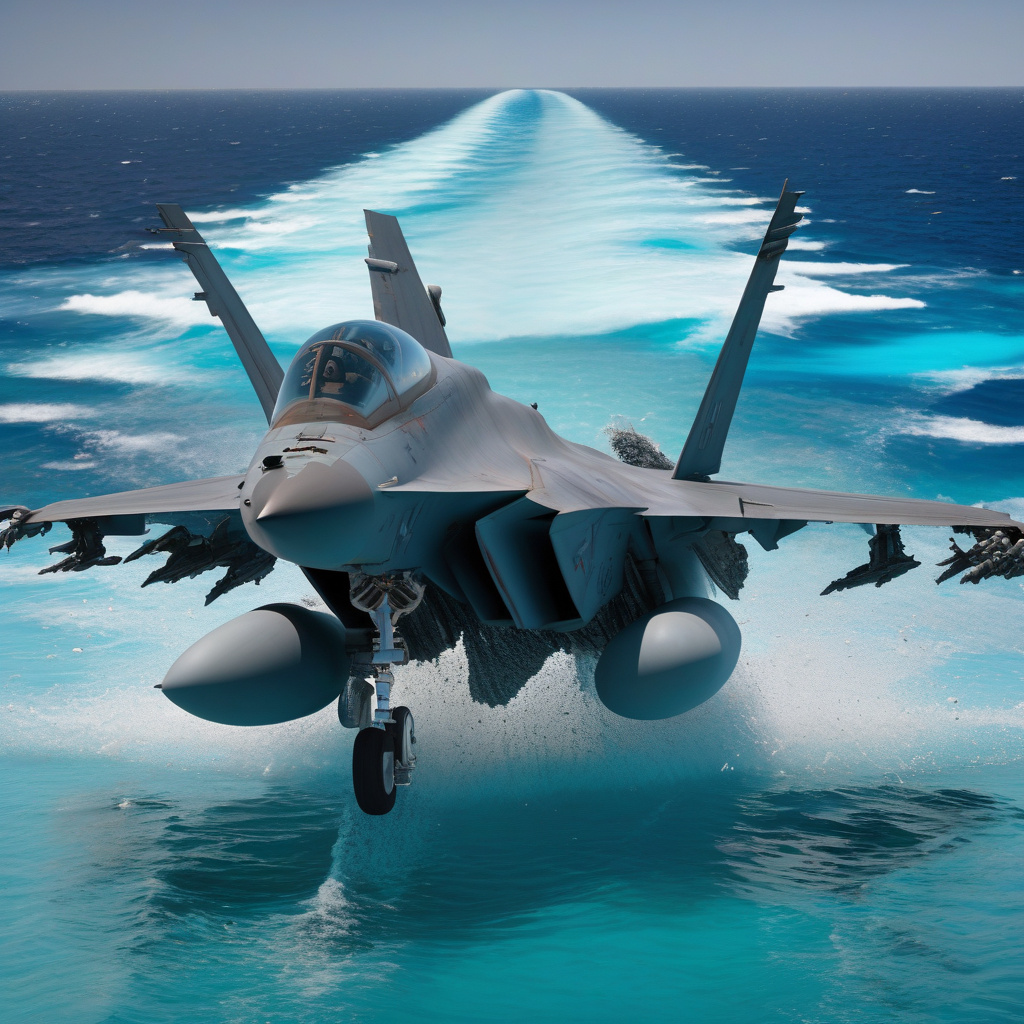A U.S. Navy F/A-18 Super Hornet was lost at Red Sea after it toppled overboard from the aircraft carrier USS Abraham Lincoln during routine operations. The incident resulted in one injury and evoked concerns about the safety of naval aviation. The fighter jet, a powerful symbol of American military prowess, now rests at the bottom of the Red Sea, serving as a stark reminder of the risks faced by naval aviators on a daily basis.
The mishap occurred during what was supposed to be a routine launch from the aircraft carrier. As the Super Hornet accelerated down the deck of the USS Abraham Lincoln, a mechanical failure caused it to careen off the edge and plummet into the waters below. The pilot managed to eject from the aircraft before impact, sustaining minor injuries in the process. The quick response of the carrier’s search and rescue team ensured that the pilot was swiftly recovered from the sea and received necessary medical attention.
Naval aviation is a high-stakes environment where split-second decisions can mean the difference between life and death. The men and women who operate these sophisticated aircraft undergo rigorous training to prepare for all eventualities, yet accidents like the one in the Red Sea serve as a sobering reminder of the inherent dangers of their profession. Despite advancements in technology and safety protocols, the unpredictable nature of military operations means that risks can never be entirely eliminated.
In the aftermath of the incident, an investigation was launched to determine the cause of the mechanical failure that led to the loss of the Super Hornet. Such investigations are standard procedure following any mishap involving military equipment, as they provide valuable insights that can help prevent similar incidents in the future. The goal is not just to assign blame, but to identify systemic issues, improve training protocols, and enhance safety measures to protect the lives of service members.
The loss of a multi-million dollar aircraft like the F/A-18 Super Hornet is a blow to the U.S. Navy, both in terms of operational capabilities and financial resources. Each aircraft represents a significant investment of taxpayer money, and their loss has a tangible impact on the military’s ability to fulfill its mission effectively. In addition to the financial cost, there is also the human element to consider – the pilot who ejected from the stricken jet, the sailors who witnessed the incident, and the families who await news of their loved ones serving overseas.
Despite the challenges and risks inherent in naval aviation, incidents like the one in the Red Sea serve as a testament to the courage and professionalism of the men and women who serve in the U.S. Navy. Their dedication to duty, their commitment to their comrades, and their unwavering resolve in the face of adversity are qualities that define the finest traditions of the U.S. military. As the investigation into the loss of the F/A-18 Super Hornet continues, one thing is certain – the sailors of the USS Abraham Lincoln and the naval aviation community as a whole will learn from this tragedy and emerge stronger and more resilient as a result.
In the world of military aviation, accidents are an unfortunate reality. However, it is how we respond to these incidents, how we learn from them, and how we strive to prevent them in the future that truly defines our character. The U.S. Navy’s commitment to safety, professionalism, and excellence remains unwavering, even in the face of adversity. As the sun sets over the Red Sea, casting its golden light upon the waters where the Super Hornet now rests, we are reminded of the sacrifices made by those who serve and the challenges they overcome every day in defense of their country.
naval aviation, USS Abraham Lincoln, F/A-18 Super Hornet, military safety, aircraft mishap












